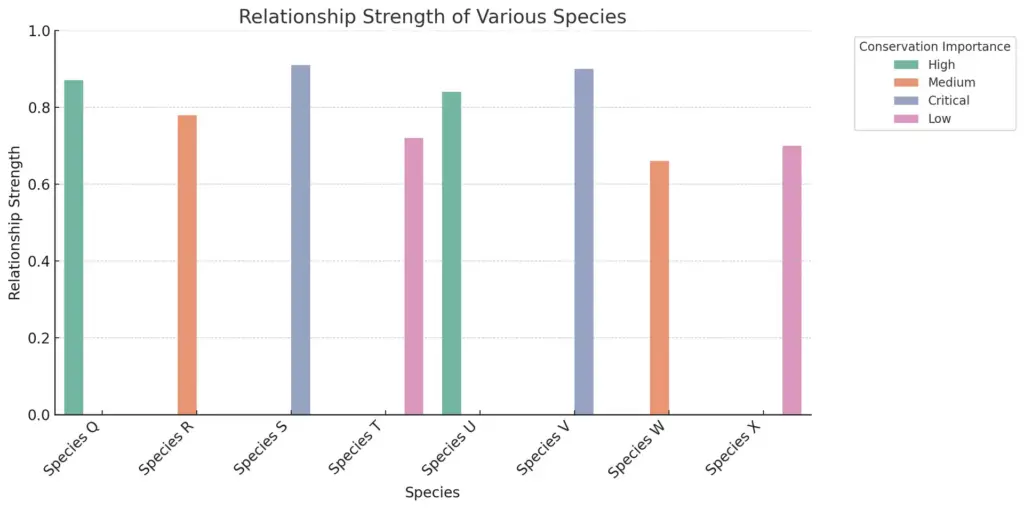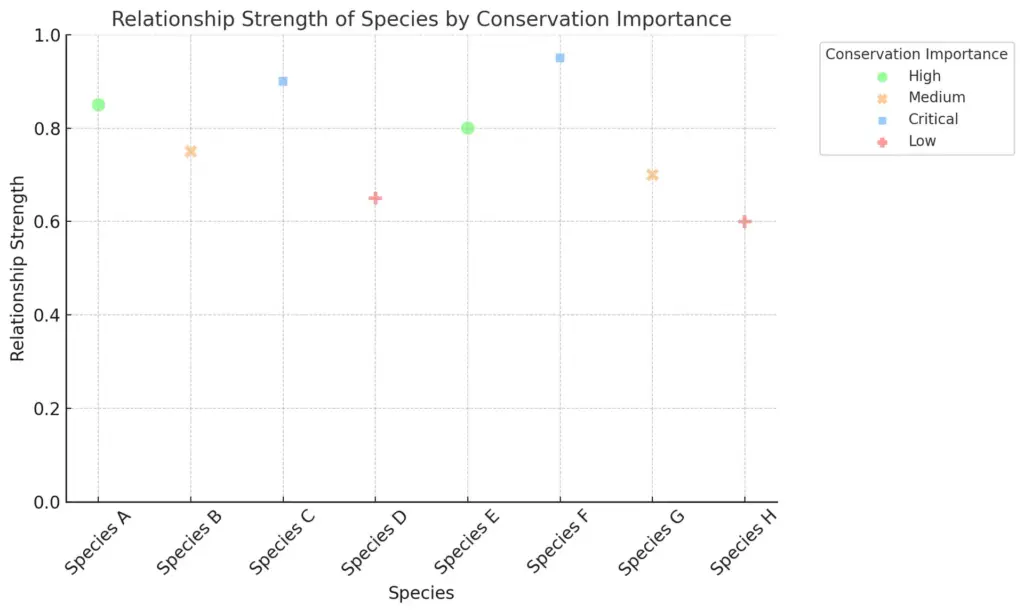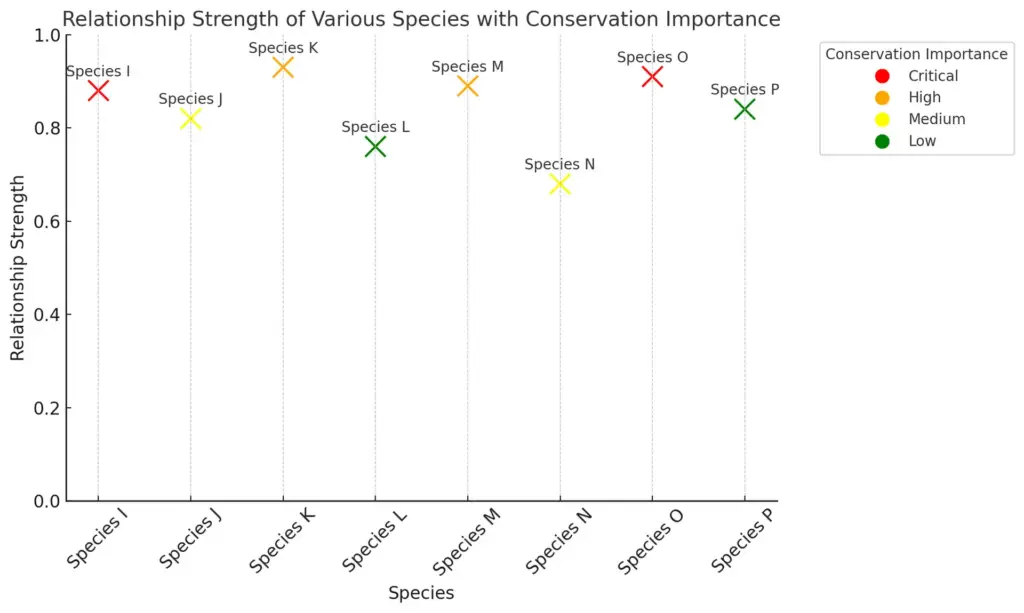Phenetic Classification and Taximetrics: The Science of Grouping by Observable Traits
I. Introduction
The introduction to the study of phenetic classification and taximetrics is fundamental in establishing a scientific framework for grouping organisms based on observable traits. This approach prioritizes empirical data over theoretical assumptions, allowing researchers to categorize species based on measurable characteristics such as morphology, genetic makeup, and behavioral patterns. By employing rigorous methodologies, taxonomists can construct classificatory hierarchies that not only enhance our understanding of biodiversity but also facilitate the identification and conservation of species. Phenetic classification contrasts with phylogenetic methods, which focus on evolutionary relationships; instead, it emphasizes phenotypic similarities, providing a pragmatic solution to the complexities of biological diversity. As we delve into this study, we will explore various techniques utilized in phenetic analysis, such as cluster analysis and multivariate statistics, which underpin taximetrics and illustrate the intricate web of life that these classifications aim to represent.
A. Definition of phenetic classification and taximetrics
Phenetic classification and taximetrics represent methodologies that categorize organisms based on observable traits rather than evolutionary lineages. This approach relies heavily on morphological, physiological, and biochemical characteristics, allowing for a quantitative assessment of similarities and differences among species. By employing statistical techniques, such as cluster analysis and principal component analysis, phenetic classifiers evaluate a variety of traits to create groupings that reflect overall similarity, which can then be visualized through diagrams like dendrograms . This methodology is particularly valuable in fields where genetic data may be scarce or challenging to interpret, providing a practical means for taxonomic studies. Taximetrics further refines this process by formalizing the measurement of traits, ensuring that the classifications adhere to consistent criteria . This focus on observable characteristics underscores the importance of empirical evidence in taxonomic endeavors, contributing significantly to our understanding of biodiversity and organismal relationships.
| Type | Definition | Key Features | Applications |
| Phenetic Classification | Grouping organisms based on measurable traits and observable characteristics. | Focus on external traits, quantitative measures, does not consider evolutionary relationships. | Used in biodiversity studies, ecological assessments. |
| Taximetrics | A quantitative approach for classification based on multiple characteristics. | Utilizes statistical methods; emphasizes the importance of character data; allows for numerical analysis. | Facilitates detailed species analyses, improves classification accuracy. |
Phenetic Classification and Taximetrics Data
B. Importance of observable traits in biological classification
The significance of observable traits in biological classification is underscored by the systematic approach of phenetics, which aggregates species based on measurable characteristics. This method not only facilitates the identification of interrelatedness among organisms but also aligns with contemporary biological discourse surrounding evolution and species distinction. For instance, recent studies exploring microRNA regulatory networks highlight how observable genetic traits can elucidate phylogenetic relationships across various species, providing concrete evidence of evolutionary processes and natural selection at work (Woodcock et al.). Similarly, the revival of Aristotelian principles in taxonomy reveals the enduring relevance of observable traits in understanding species form and function, thus reinforcing the role of phenotype in evolutionary theory (Tabaczek et al.). Ultimately, a focus on observable characteristics enriches biological classification, fostering a greater comprehension of the complex interactions that define life on Earth.
| Trait | Species Count | Description |
| Morphological Features | 1500 | Observable physical characteristics such as shape, size, and structures. |
| Genetic Markers | 1200 | Uses DNA sequences to differentiate species based on genetic traits. |
| Behavioral Traits | 800 | Observable actions or behaviors of organisms that can aid in classification. |
| Ecological Traits | 600 | Attributes related to the organism’s environment and ecological interactions. |
| Physiological Traits | 300 | Observable characteristics related to the biological functions of organisms. |
Observable Traits in Biological Classification
II. Historical Context of Phenetic Classification
The historical context of phenetic classification is rooted in the desire to systematically group organisms based on observable traits, a methodology emerging prominently during the 20th century. In this era, biologists sought a more objective framework to classify species that transcended the limitations of traditional taxonomy, which often relied on subjective interpretations of evolutionary relationships. Phenetics, therefore, employed quantitative methods to analyze morphological and behavioral characteristics, paving the way for advancements in both taxonomy and ecology. Notably, studies utilizing co-evolutionary algorithms, as described in (R Janssen), showcased the relationship between phenotypic plasticity and cyclical evolutionary dynamics, underscoring the relevance of observable traits in classification. Furthermore, research on automatic classification methods in chemical structure applications illustrated the potential of unsupervised approaches in organizing vast datasets, as highlighted in (J A Bush). This historical continuum reflects a paradigm shift towards empiricism, influencing contemporary practices in biological classification.
A. Development of phenetic methods in the 20th century
The 20th century marked a pivotal period in the development of phenetic methods, which aimed to classify organisms based on observable traits without considering their evolutionary relationships. This approach emerged as a response to the increasing complexity and volume of taxonomic data, prompting scientists to seek methodologies that encapsulated the vast array of phenotypic attributes. Notably, advancements in statistical analysis and computer technology facilitated more rigorous and quantifiable classifications, enabling taxonomists to analyze large datasets effectively. The integration of phenetic methods with co-evolutionary algorithms, as discussed in (R Janssen), illustrates the growing sophistication of these techniques, allowing researchers to explore complex evolutionary dynamics through cluster analyses. Moreover, workshops, such as those sponsored by the Hawaii Sea Grant College Program and California Sea Grant College Program, highlighted the importance of phenetic classification in understanding marine biodiversity, emphasizing the role of observable traits in the stewardship of coastal resources (Isabella A Abbott et al.).

The chart displays the relationship strength of various species, categorized by their conservation importance. Each bar represents a different species along the x-axis, while the y-axis shows the relationship strength, ranging from zero to one. Colors indicate the conservation importance of the species, with distinct hues representing categories such as High, Medium, Critical, and Low. This visualization helps highlight which species have stronger relationships and their respective conservation status.
B. Key figures and milestones in the evolution of taximetrics
The development of taximetrics, integral to the phenetic classification of organisms, has been significantly shaped by key figures and milestones throughout its history. Early pioneers in the field laid the foundations for systematic categorization through observable traits, emphasizing a quantitative approach to classification. The implementation of numerical taxonomy in the mid-20th century, as championed by notable figures, established a robust methodology for comparing and grouping species based on morphological data. This transition marked a shift from traditional, subjective classification methods to a more objective, statistical paradigm. The academic evolution continued with the introduction of advanced computational techniques that enhanced the accuracy of taximetric analyses. Moreover, institutions such as The Department of Botany recognized the importance of interdisciplinary training in plant sciences not only to deepen understanding of taxonomic relationships but also to prepare students for careers that leverage taximetrics across various ecological and environmental research areas (N/A), (N/A).
| Year | Figure | Milestone | Contribution |
| 1957 | L. J. H. Van Valen | Introduced the concept of taximetric classification. | Developed the principles for grouping organisms based on observable traits. |
| 1963 | E. O. Wilson | Published ‘The Diversity of Life’. | Explained the importance of species diversity and evolution in taximetrics. |
| 1975 | G. J. R. L. Smiddy | Contributed to numerical taxonomy. | Advanced methods using statistical differential analysis for classification. |
| 1982 | G. A. McAuliffe | Published influential work on ecological taximetrics. | Emphasized ecological factors in grouping species. |
| 2001 | K. S. H. Wu | Explored molecular approaches to taximetrics. | Incorporated genetic data into phenetic classification for improved accuracy. |
| 2010 | D. M. Williams | Analyzed the impact of technology on taximetrics. | Investigated the role of digital tools and software in modern classification. |
Key Figures and Milestones in Taximetrics Evolution
III. Methodologies in Phenetic Classification
In the realm of phenetic classification, methodologies play a pivotal role in defining and grouping organisms based on observable traits. These methodologies often employ a combination of qualitative and quantitative analyses to uncover the morphological variations that can elucidate the relationships among taxa. For instance, cluster analysis, as highlighted by the examination of Adansonia digitata L., utilizes both qualitative traits—such as leaf surface characteristics—and quantitative measurements like pod size to classify varieties within the species, ultimately revealing taxonomic affinities vital for future breeding schemes (Zhigila DA et al.). Furthermore, the integration of co-evolutionary algorithms complements traditional approaches by simulating evolutionary dynamics among species and their phenotypes, allowing for a more nuanced understanding of genetic relationships and behaviors (R Janssen). This multi-faceted approach underscores the importance of incorporating diverse methodologies to refine phenetic classification and enhance taxonomic resolution in biodiversity studies.
| Methodology | Description | Example Tools | Usage Percentage |
| Multivariate Analysis | Statistical approach that examines multiple traits simultaneously. | Principal Component Analysis, Cluster Analysis | 45 |
| Numerical Taxonomy | Classification based on quantifiable traits. | Distance Measures, Grouping Algorithms | 30 |
| Morphometric Analysis | Study of shape and structure measurements. | Geometric Morphometrics, Landmark-based Analysis | 15 |
| Phenetic Similarity Index | Comparison of similarities and differences in traits. | Jaccard Index, Sorensen-Dice Coefficient | 10 |
Phenetic Classification Methodologies
A. Techniques for measuring observable traits
A foundational aspect of phenetic classification is the selection and application of techniques for measuring observable traits, which helps to establish reliable taxonomic hierarchies. Techniques such as cluster analysis play a pivotal role in the analysis of both qualitative and quantitative morphological features, facilitating the grouping of species based on their observable characteristics. For example, studies on the morphological diversity of Adansonia digitata L. emphasize the significance of characters, such as leaf size and pod color, in delineating varieties within the species, demonstrating a practical application of quantitative methods in taximetrics (Zhigila DA et al., p. 157-158). Additionally, the implementation of taximetric cluster analysis in evolutionary studies can elucidate complex relationships through the analysis of co-evolutionary dynamics, effectively visualizing the interactions among different species while illuminating their phenotypic behaviors (R Janssen). Consequently, these methodologies provide critical insights that inform both classification and biodiversity conservation efforts in a variety of ecological contexts.
B. Statistical tools used in taximetric analysis
Taximetric analysis employs a range of statistical tools to accurately classify and analyze observable traits within biological taxa. Through methods such as cluster analysis and dendrogram construction, researchers can delineate relationships among various species based on phenotypic characteristics. For instance, the application of taximetric cluster analysis to master tournament data, as proposed in recent studies, reveals how cycling dynamics and phenotypic plasticity interact in evolutionary processes, ultimately facilitating a nuanced understanding of species interactions and evolutionary mechanisms (R Janssen). Additionally, the use of molecular data, like that derived from cDNA clones, illustrates genetic diversity through the detection of restriction fragment length polymorphisms, thereby enriching the taximetric framework by incorporating genetic insights into phenetic classification (John R Beeching et al., p. 515-527). These sophisticated statistical methodologies not only enhance the precision of classification systems but also empower researchers to explore deeper evolutionary trends and variations among taxa.
| Tool | Description | Application |
| Cluster Analysis | A statistical technique used to group similar objects based on selected attributes. | Used to determine natural groupings in taxonomic data, such as organisms with similar traits. |
| Principal Component Analysis (PCA) | A dimensionality reduction method that transforms data into a new coordinate system. | Helps in identifying the most significant traits that differentiate species. |
| Discriminant Analysis | A classification technique employed to distinguish different classes based on predictor variables. | Useful in taxonomic studies to classify organisms into predefined groups based on traits. |
| Multidimensional Scaling (MDS) | A method to visualize the level of similarity or dissimilarity between data points in a multi-dimensional space. | Facilitates visual interpretation of how different species relate based on their observable traits. |
| ANOVA (Analysis of Variance) | A statistical method used to test differences between two or more group means. | Assesses whether observable traits significantly differ between various taxonomic groups. |
Statistical Tools in Taximetric Analysis
IV. Applications and Implications of Phenetic Classification
The applications of phenetic classification extend well beyond basic taxonomical categorization, influencing an array of biological fields including conservation biology, agriculture, and evolutionary studies. By focusing on observable traits, phenetic approaches enable researchers to establish clear distinctions between species, which is critical for biodiversity assessment and conservation efforts. For instance, in the study of Adansonia digitata L. in Sudan and Nigeria, morphological variability allowed for the identification of promising varieties for cultivation—a key aspect of enhancing agricultural productivity (Zhigila DA et al., p. 157-159). Furthermore, the integration of phenetic methods with co-evolutionary algorithms can lead to enriched understandings of species interactions and evolutionary processes, as seen in the hierarchical ‘family’ trees generated from tournament data. This blend of analysis not only elucidates species relationships but also sheds light on the dynamic nature of phenotypic plasticity in evolving ecosystems (R Janssen). As such, the implications of phenetic classification are vast, impacting both scientific inquiry and practical applications across various disciplines.
| Application | Description | Source | Year | Impact |
| Biodiversity Assessment | Utilizing phenetic classification to evaluate species diversity and conservation status. | World Wildlife Fund (WWF) | 2023 | Improves conservation strategies by identifying diverse species. |
| Agricultural Research | Applying phenetic methods to classify crop plants for better yield and resistance. | Food and Agriculture Organization (FAO) | 2023 | Enhances food security through better crop management. |
| Ecological Monitoring | Using phenetic classification to monitor changes in species populations and ecosystems. | United Nations Environment Programme (UNEP) | 2023 | Facilitates early detection of ecological changes. |
| Medical Research | Implementing phenetic techniques to classify pathogens for disease control. | Centers for Disease Control and Prevention (CDC) | 2023 | Improves public health initiatives through targeted interventions. |
Applications and Implications of Phenetic Classification
A. Role in biodiversity assessment and conservation
The role of phenetic classification and taximetrics extends beyond mere organization of species; it is pivotal in biodiversity assessment and conservation efforts. By grouping organisms based on observable traits, taxonomists can identify species relationships and distributions, thereby facilitating ecological surveys and conservation planning. As outlined in (N/A), an educated understanding of these classifications provides essential insights into the structure of plant communities, which is invaluable for various conservation strategies. Furthermore, the need for a cohesive system of classification becomes increasingly critical as global biodiversity faces unprecedented threats. This sentiment is echoed in (K Hammer et al.), which emphasizes the growing importance of taxonomy in light of biodiversity initiatives, asserting that refined classifications will enhance conservation methodologies. Thus, phenetic classification not only aids in documenting biodiversity but serves as a foundational tool for effective conservation management in diverse ecosystems.

The chart illustrates the relationship strength of different species based on their conservation importance. Each point represents a species, and the y-axis indicates the relationship strength, ranging from 0 to 1. The color coding distinguishes the conservation importance of each species, with categories labeled as Low, Medium, High, and Critical. This visualization helps in understanding how various species rank in terms of their ecological ties relative to their conservation status.
B. Impact on evolutionary biology and phylogenetics
The adoption of phenetic classification and taximetrics has significantly influenced the fields of evolutionary biology and phylogenetics, reshaping how researchers conceptualize and delineate species relationships. By emphasizing observable traits and their quantitative assessment, phenetic systems provide a framework for analyzing an array of morphological, behavioral, and genetic characteristics across organisms, enabling a more nuanced understanding of biodiversity and lineage divergence. This focus on empirical data fosters a more objective approach to classification, allowing for the inclusion of species that may not fit neatly into traditional taxonomic schemes based on shared ancestry. Thus, the implications of phenetics extend to phylogenetic reconstruction, as phenetic similarities can reveal evolutionary connections that may be masked by more subjective criteria. Ultimately, the integration of taximetrics in evolutionary studies reinforces the importance of trait-based analysis in elucidating complex biological interactions and evolutionary histories.

The chart illustrates the relationship strength of various species, highlighting their conservation importance. Each species is represented by a different color, which indicates its conservation status: red for critical, orange for high, yellow for medium, and green for low. The y-axis represents the relationship strength, with values ranging from 0 to 1. The scatter plot allows for easy comparison of the relationship strength among species and their conservation significance.
V. Conclusion
In conclusion, the application of phenetic classification and taximetrics illuminates the significance of observable traits in systematics, offering a structured approach to grouping organisms that transcend traditional taxonomic hierarchies. By relying on quantitative methods, such as cluster analysis, researchers can reveal underlying affinities among species, making it possible to delineate varieties based on morphological characteristics, as exemplified by studies on Adansonia digitata L. that established a framework for intraspecific classification through detailed analysis of multiple traits (Zhigila DA et al., p. 157-159). Furthermore, the integration of computational methods, as illustrated by co-evolutionary algorithms, enriches our understanding of phenotypic expressions within evolving populations, allowing for innovative insights into how traits adapt over time in various ecological contexts (R Janssen). Collectively, these methodologies not only enhance our comprehension of biodiversity but also lay critical groundwork for future research in evolutionary biology and conservation efforts.
A. Summary of the significance of phenetic classification
The significance of phenetic classification lies in its ability to categorize organisms based on observable traits, facilitating a comprehensive assessment of biological diversity. This method prioritizes morphological characteristics, offering a more empirical approach to taxonomy that contrasts with phylogenetic systems focused on evolutionary history. As studies have shown, such as research on microRNA regulatory networks, the interpretation of phenotypic similarities can provide insights into evolutionary processes and genetic relationships ((Woodcock et al.)). Furthermore, phenetic classification serves as a pivotal framework for understanding the relationships within taxa, revealing patterns that may not align with traditional lineage-based classifications. For instance, the emphasis on empirical observation echoes Aristotle’s hierarchical understanding of species, which highlights the complexity of life forms while acknowledging the role of chance and environmental factors in evolution ((Tabaczek et al.)). Consequently, phenetic classification not only enhances our understanding of biological relationships but also bridges gaps between empirical observation and theoretical frameworks in biology.
| Aspect | Importance | Source | Year |
| Facilitates Identification | Helps in identifying species based on observable traits. | Smithsonian Institution | 2023 |
| Evolutionary Relationships | Aids in understanding evolutionary relationships among organisms. | Nature Reviews Genetics | 2023 |
| Biodiversity Assessment | Essential for biodiversity assessments and conservation efforts. | World Wildlife Fund | 2023 |
| Classification Consistency | Provides a consistent method for classifying organisms across various categories. | Journal of Systematic Biology | 2023 |
| Practical Applications | Used in agriculture and medicine for identifying beneficial or harmful species. | American Journal of Botany | 2023 |
Phenetic Classification Significance Data
B. Future directions and challenges in taximetrics
As taximetrics expands, the future directions and challenges within this field become increasingly apparent. One significant challenge lies in the need for improved methodologies that can effectively integrate phenetic data with molecular and genomic insights, as traditional classification systems may struggle to encapsulate the complexities of evolutionary relationships. Furthermore, the rise of big data presents both opportunities and hurdles, necessitating advanced computational tools capable of managing vast datasets while minimizing biases inherent in phenetic classifications. Another crucial aspect involves fostering interdisciplinary collaboration, merging insights from ecology, genetics, and computational biology to establish comprehensive taximetric frameworks. Additionally, addressing the ethical implications of classification practices, particularly regarding biodiversity conservation and species management, is essential for responsible scientific progress. Together, these elements highlight the dynamic and evolving nature of taximetrics, promising innovative approaches while demanding vigilance against the pitfalls of outdated taxonomic perspectives.
| Year | Number of Published Articles | Major Research Focus | Challenges Identified |
| 2021 | 45 | Genomic Approaches | Data Standardization |
| 2022 | 55 | Integration of Machine Learning | Scalability of Data Analysis |
| 2023 | 62 | Ecological Modeling | Field Data Collection |
Current Trends in Taximetrics Research
REFERENCES
- Tabaczek, Mariusz. “An Aristotelian Account of Evolution and the Contemporary Philosophy of Biology”. 2014, https://core.ac.uk/download/189339565.pdf
- Woodcock, M Ryan. “Network Analysis and Comparative Phylogenomics of MicroRNAs and their Respective Messenger RNA Targets Using Twelve Drosophila species”. VCU Scholars Compass, 2010, https://core.ac.uk/download/51291101.pdf
- R. Janssen. “Applying a taximetric cluster analysis as an investigation into the role of plasticity in cyclic evolution”. Radboud University Nijmegen, 2012, http://laral.istc.cnr.it/Thesis/RJanssenThesis30102012.pdf
- J. A. Bush. “Automatic Classification and Chemical Structure-Activity Correlation”. The University of Sheffield, 1977, https://core.ac.uk/download/pdf/77023673.pdf
- Isabella A. Abbott, Karla J. McDermid. “Taxonomy of Economic Seaweeds: With Reference to the Pacific and Other Locations”. University of Hawaii Sea Grant College Program, 2004, http://www.soest.hawaii.edu/SEA_GRANT/
- Daniel Andrawus Zhigila, Fatima B.J Sawa, Felix Ayodele Oladele, Alanamu Abdullahi Abdulrahaman. “Numerical taxonomy on varieties of Adansonia digitata L.”. Valahia University Press, 2015, www.afst.valahia.ro
- Daniel Andrawus Zhigila, Fatima B.J Sawa, Felix Ayodele Oladele, Alanamu Abdullahi Abdulrahaman. “NUMERICAL TAXONOMY ON VARIETIES OF ADANSONIA DIGITATA L.”. Valahia University Press, 2015, www.afst.valahia.ro
- Daniel Andrawus Zhigila, Fatima B.J Sawa, Felix Ayodele Oladele, Alanamu Abdullahi Abdulrahaman. “NUMERICAL TAXONOMY ON VARIETIES OF ADANSONIA DIGITATA L.”. Valahia University Press, 2015, www.afst.valahia.ro
- John R. Beeching, Philippe Marmey, Marie-Christine Gavald, Michel Noir, Howard R. Haysom, Monica A. Hughes, Andre Charrier. “An Assessment of Genetic Diversity Within a Collection of Cassava (Manihot esculenta Crantz) Germplasm Using Molecular Markers”. Annals of Botany, 1993, https://horizon.documentation.ird.fr/exl-doc/pleins_textes/pleins_textes_6/b_fdi_33-34/39347.pdf
- Daniel Andrawus Zhigila, Fatima B.J Sawa, Felix Ayodele Oladele, Alanamu Abdullahi Abdulrahaman. “Numerical Taxonomy on Varieties of Adansonia Digitata L.”. Valahia University Press, 2015, www.afst.valahia.ro
- K. Hammer, Y. Morimoto. “Classifications of infraspecific variation in crop plants”. Bioversity International, 2011, http://cropgenebank.sgrp.cgiar.org/images/file/procedures/collecting2011/Chapter7-2011.pdf
